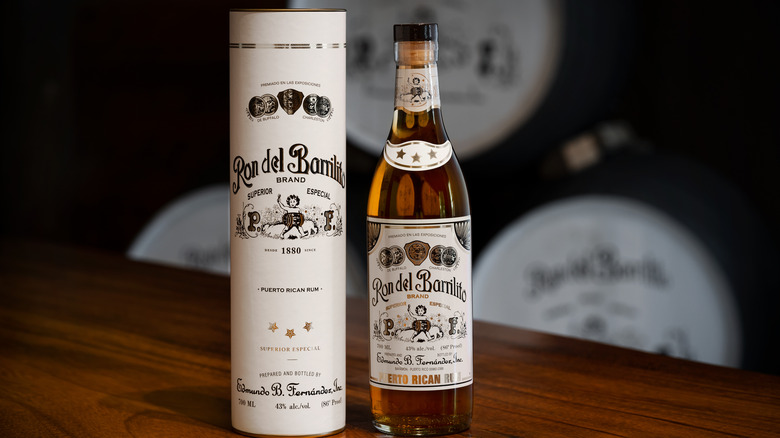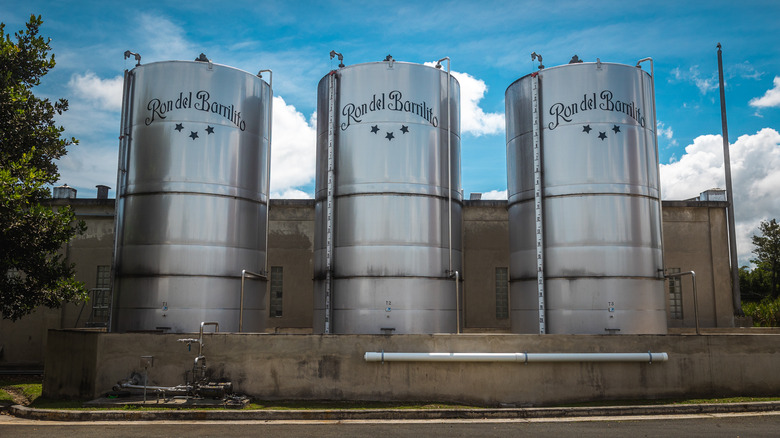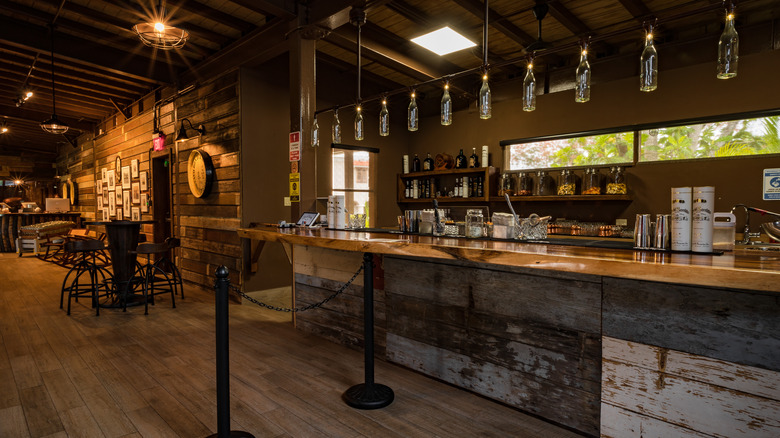Puerto Rico's Oldest Rum Has French Roots And A Rich History
Puerto Rico is widely considered the rum capital of the world, and the sugarcane-distilled liquor pulses inherently through the bloodstream of the small island and its people. There, rum is served straight or mixed into cocktails and carried through youthful nights dancing salsa. There's a constant rhythm and, even if it's not always heard, it's certainly felt. No brand encapsulates that better than Ron del Barrilito: the island's oldest and most beloved rum.
Pedro Fernȧndez founded Ron del Barrilito in 1880 after his time spent studying in Paris, France. While there, he was inspired by his engineering classmates — specifically one by the name of Egrot, the family behind the still distillation process used in European spirits like cognac. Pedro came back to Hacienda Santa Ana (the land in Bayamón, Puerto Rico that was bestowed on his family nearly a hundred years prior) with a vision of revolutionizing the island's aged rum.
"This was a completely unique process in the rum world," said Maggie Matias, Chief Commercial Executive at Ron del Barrilito. She explained to Tasting Table, "Acquiring the ex-oloroso sherry barrels to age it in was extremely challenging and expensive, and the flavor profile of rums aged in these barrels was unknown at the time." While Pedro's exact formula remains a family secret, the brand can confirm that the exact same formula is still used to this very day.
Some recommendations are based on first-hand impressions of promotional materials and products provided by the manufacturer/distributor/etc.
The original Ron Del Barrilito 3 star
While Ron del Barrilito can't specify its exact formula, Matias confirmed that all of the brand's rums are aged in ex-oloroso sherry barrels. This makes sense, seeing as they're commonly used for European spirits — particularly Cognac. When Pedro was studying in France, cognac was having a moment in upper-class European culture. Before the mid-1800s, it didn't have a reputation for anything besides being borderline undrinkable, but barrel aging changed that. Similarly, rum wasn't known for anything apart from pirates before barrels had anything to do with it. One can see why Pedro took inspiration from it for Ron del Barrilito.
"Sherry barrels impart a unique flavor on aging rums that are a definitive component of the Barrilito flavor profile," said Matias. But Cognac also played a pivotal role in Pedro's eventual production process for Ron del Barrilito — all the way from the specifications of flavor to the controlled distillation and aging processes that make rum more flavorful. "Pedro learned how to be very diligent with the production of his rum from as early as the distillation and pre-aging techniques that are applied (in Barrilito's case, the maceration process)," she explained.
Ron Del Barillito's three-star, the brand's breakthrough and long-time-only product, was a result of his perfection and replication of the craft. Using the same delineation that was once used for Cognac, Ron del Barrillito wouldn't release their second rum, the two-star bottle, until prohibition ended in the U.S.
Reaching for the stars
For nearly 80 years, Ron Del Barillito had two rums: one for drinking neat, and one for mixing into cocktails. In 2018 the brand released its limited edition four and five-star bottles. Both are made exactly how Pedro would've intended them to be — just with 20 to 35 more years under the brand's belt. With the incorporation of older rums into their blends, these bottles have an elegance to them that's best reserved for drinking neat, or with a singular ice cube at most.
"The entire Ron del Barrilito product line is aimed at preserving a history of nearly two centuries worth of brand building and legacy, and that all started with the iconic three stars label," said Matias. "Ultimately, the philosophy of the brand is that, while the label is quirky and far from the standard when it comes to product labels, the value is what is inside of the bottle, the rum." In fact, some fourth-generation Fernandez family members are still involved in the production side of the business and, until a year ago, one of Pedro's grandsons was living on the estate. Today, guests are welcome to visit Hacienda Santa Ana, where they can experience what makes Ron del Barrilito one-of-a-kind for themselves.


